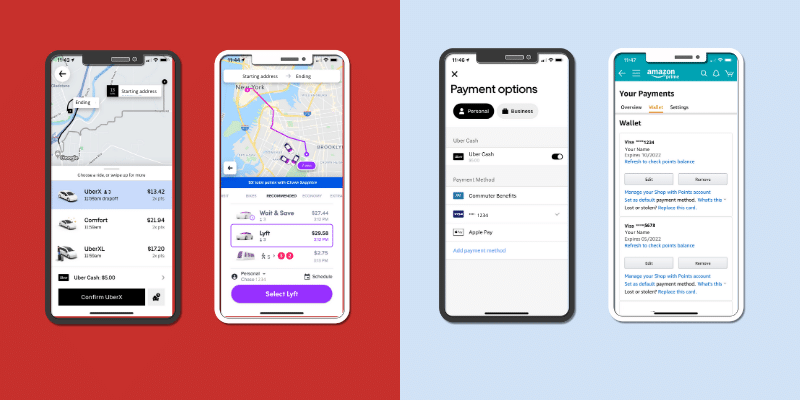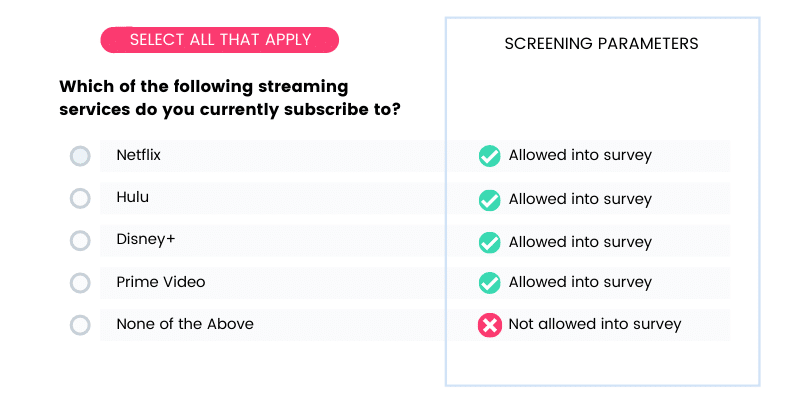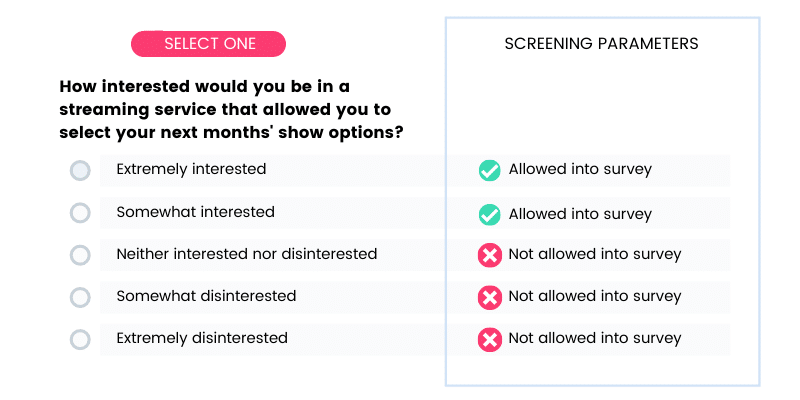How to use surveys for competitive intelligence research
Creating useful, desirable products and services are necessary for any business to succeed, but they also need to stand out against other companies that are offering comparable options. Competitive intelligence research can help them learn what they need to know to present their unique values to become leaders in their market.
What goes into competitive intelligence research?
Competitive intelligence research can include gathering data on competitors, both direct and analogous, customers, market opportunities, products offered, and environmental factors influencing business decisions (such as location).
All of this data can be used in competitive analysis to reveal where there are gaps in their business strategies, messaging, marketing, or customer satisfaction in order to pivot and take advantage of opportunities in the space or correct areas that are working against them.
Members of the company take this information and use it to inform strategic business decisions.
Cost-effective competitive research
There are plenty of ways to start your competitive intelligence research for free. Industry reports that show trends in your market, public forums or review sites where customers are expressing positive or negative experiences with a product or service, or even a simple trip to Google are great places to begin your process.
Begin by creating a list of your known direct and analogous competitors. Direct competitors are those who compete for the same target audience, directly in your market. For example, Uber and Lyft, who both offer app-based ridesharing services. Analogous competitors are those who, although are perhaps not in your market or space, are offering products or services that impact your target audience’s expectations and perceptions of your product. An example of an analogous competitor for Uber might be a traditional taxi service, although could also include other technology companies that offer features that Uber’s users like and expect. If Uber’s target audience is used to using Amazon’s saved credit card feature at checkout and would potentially choose a ridesharing service based on their ability to store that information, the technology team at Uber needs to consider it in their feature-based competitive analysis and potentially prioritize it in their product roadmap.

Using resources already available to you, you can likely develop a matrix of the suspected strengths and weaknesses of your competitors, their features, pricing and more to put together a partial idea of where your business falls in the space.
Some areas of competitive analysis are harder to gather data on, however. What are your competitors’ current customers dissatisfied with? How do their customers perceive your product, and why have they chosen to go with your competitor’s instead? What channels are they using to promote their products?
At this point, you are in a good position to invest in competitive intelligence tools to further your data collection.
How to conduct competitive intelligence research with surveys
Surveys are a great way to connect with your target audience to ask anything you need to know. Whether it’s asking your own customers about their satisfaction with your product, or connecting directly with your competitor’s customers to ask what features are missing.
In most survey tools, you can define your target audience using traditional demographic data such as age, gender, location, and more. However, screening questions are an especially interesting feature for surveys dealing with competitive research.
Screening questions are offered by some competitive intelligence tools to help define the target audience further based on their beliefs, behaviors, or attitudes.

If a company wanted to target people who preferred or were users of their competitor’s product, they could easily use a screening question to find these audiences and ONLY allow users of the competitor’s product to take the survey. This gives you direct data from the source you want— the target audience you are trying to win over.
Screening questions are also valuable in doing comparative research on your own product. Perhaps you want to understand not just what your competitor is offering, but what your product is NOT offering. A screening question can help you find the target audience interested in your general product, service, or industry to understand who is leading consumer perceptions and why.

Survey design for collecting competitive data
Some questions you might want to include in your competitive intelligence survey could be:
Questions about brand recall and positioning
- Please list all of the brands you can think of in [INDUSTRY] space.
- Please rank the following brands from highest quality to lowest quality.
- Do you feel that [BRAND NAME] represents the product accurately?
Questions about your competitors’ features
- Please rank the following features from most valuable to least valuable
- Which features do you like the most on [COMPETITOR’S PRODUCT]?
- Are there any features NOT offered by [COMPETITOR NAME] that you wish were available?
Questions about intent or loyalty
- What would make you consider a different solution to [COMPETITOR’S PRODUCT]?
- How much would you pay if [DESIRABLE FEATURE] were offered?
- What do you like most about [COMPETITOR NAME]’s brand or values?
- What do you like most about [YOUR COMPANY]’s brand or values?
Questions about gaps in current offerings
- What do you expect from [PRODUCT OR SERVICE] that you are not getting from available solutions?
- What features or offerings do you desire from [PRODUCT OR SERVICE] that would excite you more?
- Are there any brands that you can think of that are doing this well?
- When you think about the features you use the most, is there anything you are dissatisfied with?
These questions are simply ideas to help you begin to think about potential needs in your competitive strategy to ensure that you choose the right competitive intelligence tool to help you achieve what you need to know.
Competitive intelligence research can help you see how you stack up against comparable products and services, how the market sees you, and can guide you towards better strategies and business decisions. For further support in creating a survey for competitive intelligence research, connect with the 24/7 CX team at Pollfish to learn how to design and launch your own cost-effective solution to understanding your place in the market.
Ally
Ready to Try Pollfish?
Create your survey with AI, target high-quality respondents starting at $0.95 per complete, and start getting results in just minutes in real-time. From running a simple product concept survey to managing a constant stream of trackers for dozens of clients in dozens of countries, we’ve got you.

